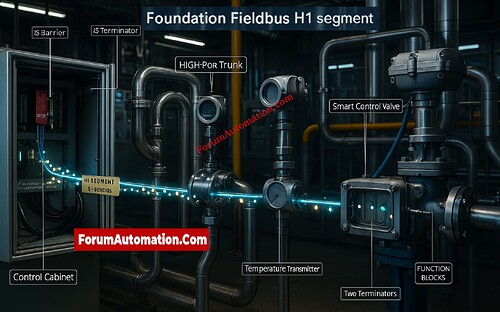What is the H1 protocol?
What is the H1 Protocol?
The Foundation Fieldbus H1 protocol is a digital, two-way communication standard used in process automation to connect field instruments like transmitters, actuators, and control valves with control systems. It works at 31.25 kbit/s and lets up to 32 devices talk to each other over a single twisted-pair or fiber-optic cable. This cable can also carry electricity to the field sensors. Compared to older 4–20 mA systems, where each instrument needed its own cabling, this makes wiring a lot simpler.
One of H1’s best features is its deterministic communication, which makes sure that data is sent and received at the right moment for process management. This synchronization reduces latency (dead time) and jitter, which is very important for closed-loop control systems. It also lets function blocks run, alarms be time-stamped, and field devices talk to each other directly without needing the controller to be there all the time.
Using ideas like Entity, FISCO, or High Power Trunk (HPT) approaches, the protocol offers intrinsically safe (IS) wiring for dangerous situations. These methods keep the network running well while keeping energy levels safe. To keep the right impedance and stabilize signal reflection, H1 segments usually use two terminators.
Foundation Fieldbus H1 lets sectors including oil and gas, petrochemicals, and power generation have smarter, more dependable, and more efficient process control networks by allowing digital communication, distributed control, and integrated power delivery.
